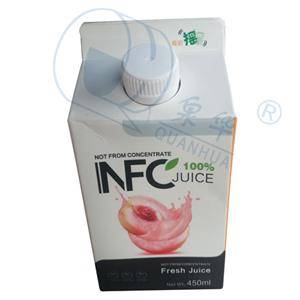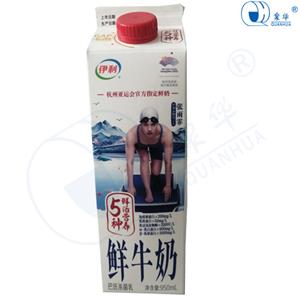In today 's fast-paced world, consumer preferences are constantly changing, and companies must adapt to keep up. One of the most important areas where these changes are most obvious is packaging. From environmental issues to technological advances, understanding the latest trends in packaging can help companies stay ahead of the curve and meet the needs of modern consumers. The rise of environmentally friendly packaging One of the most prominent trends in packaging today is the growing demand for environmentally friendly choices. Consumers are increasingly aware of their environmental footprint and seek products that conform to their values. This shift has led to a proliferation of sustainable packaging solutions, including biodegradable materials, recyclable packaging and minimalist designs that reduce waste. Biodegradable materials such as plant-based plastics and compostable paper are becoming more and more popular because they can decompose naturally and reduce the burden on landfills. Demand for recyclable packaging is also high, and the company is focused on creating products that are easy for consumers to recycle.
In addition, minimalist designs use less material and avoid overpacking, attracting environmentally conscious, simple and sustainable buyers. Brands that adopt environmentally-friendly packaging can not only attract environmentally conscious consumers, but also enhance their corporate social responsibility ( CSR ) image. By investing in sustainable practices, companies can build a positive brand image and cultivate long-term customer loyalty. The Impact of Technology on Packaging Technology is revolutionizing the packaging industry, providing innovative solutions that meet the needs of modern consumers. Intelligent packaging combines advanced technologies such as two-dimensional code, NFC ( near-field communication ) and RFID ( radio frequency identification ), and becomes more and more common. These technologies enable consumers to instantly access product information, enhance the user experience and ensure product safety.
The two-dimensional code on the packaging can guide consumers to understand detailed product information, instructions or promotional content, and create an interactive experience. NFC technology enables non-contact interaction, allowing consumers to access information or make payments with just a touch of a smartphone. RFID tags are usually used for inventory management, which helps to track the entire process of products from production to sales, ensuring authenticity and reducing the risk of forgery. In addition to smart packaging, augmented reality ( AR ) is also entering the packaging industry. By scanning AR-enabled packaging with a smartphone, consumers can experience immersive experiences such as 3D product views, virtual try-outs, or interactive games. These technological advances not only attract technology-savvy consumers, but also provide valuable data on consumer behavior and preferences for brands. Packaging personalization and customization
Personalization is another key trend in shaping the future of packaging. Today 's consumers expect to customize products and experiences according to personal preferences, and packaging is no exception. Customized packaging, including personalized labels, unique designs and limited editions, enables brands to build closer relationships with customers. For example, personalized tags can contain the customer 's name, special information or unique design, so that the product feels unique and special. This method is particularly popular in the food and beverage industry, and custom packaging can enhance the gift-giving experience or commemorate special occasions. The limited-edition packaging design also creates a sense of urgency and exclusiveness, encouraging consumers to buy before the product is sold out. These unique designs often become collectibles, further enhancing brand loyalty and engagement. In addition, customization can be extended to the function of packaging to provide packaging that meets the needs of specific consumers. For example, re-sealed bags for convenience, weight control packaging for health-conscious buyers, or child protection packaging for safety. By providing tailored solutions, brands can meet diverse consumer needs and enhance the overall user experience.
Driven by changes in consumer trends and technological advances, the packaging landscape continues to evolve. The rise of environmentally friendly packaging reflects the enhancement of consumers ' awareness of environmental protection, and the technological innovation of intelligent packaging and augmented reality caters to the generation of proficient technology. The personalization and customization of packaging further highlights the importance of creating a unique and memorable experience for consumers. By understanding these trends and incorporating them into packaging strategies, companies can not only meet the changing needs of customers, but also gain a competitive advantage in the market. Accepting these changes in consumer preferences ensures that brands remain relevant, sustainable and engaged in a changing world.




